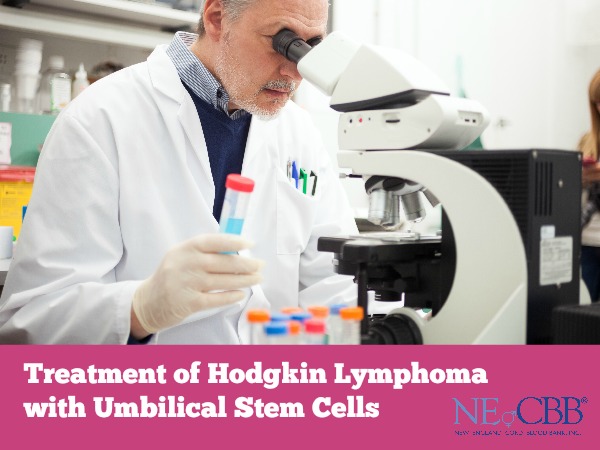 Stem cells from umbilical cord blood are currently being used in the treatment of more than 80 diseases, and testing is currently underway for the future treatment of many other diseases. New England Cord Blood Bank has been successfully processing and storing umbilical cord blood stem cells since 1995. One of the diseases currently being treated with umbilical cord blood stem cells is Hodgkin’s Lymphoma, a cancer of the lymph cells.
Stem cells from umbilical cord blood are currently being used in the treatment of more than 80 diseases, and testing is currently underway for the future treatment of many other diseases. New England Cord Blood Bank has been successfully processing and storing umbilical cord blood stem cells since 1995. One of the diseases currently being treated with umbilical cord blood stem cells is Hodgkin’s Lymphoma, a cancer of the lymph cells.
About the Disease
Lymphoma is a cancer of specific white blood cells, called lymphocytes, which typically protect your immune system. According to the Mayo Clinic, the main difference between Hodgkin and non-Hodgkin’s lymphoma is that Hodgkin lymphoma contains a specific type of large cell called a Reed-Sternberg cell. Although it can spread to any organ or tissue, Hodgkin lymphoma often starts in the lymph nodes and tends to spread slowly.
Who is at Risk
According to the American Cancer Society, many people who get Hodgkin lymphoma have few or no known risk factors. There is also some research to suggest that having a family history of Hodgkin lymphoma, as well as a history of infectious mononucleosis may slightly increase risk. Males also get the disease slightly more often than females.
Why Cord Blood Stem Cells Work Best
Hodgkin lymphoma, also called Hodgkin’s disease, is one of the diseases for which transplants of blood-forming stem cells (Hematopoietic Stem Cell Transplants, HSCT) are a standard treatment.
Often a person with Hodgkin lymphoma is initially treated with aggressive treatments such as chemotherapy and radiation to destroy the cancer cells. If a person is then non-responsive to those treatments or has a relapse after a period of remission, a stem cell transplant may be used.
Umbilical stem cells used in the treatment of Hodgkin lymphoma include allogeneic (cells often from a related donor) and autologous (cells from the patient). According to Cancer Treatment Centers of America, “An advantage of an allogeneic transplant is that the stem cells come from a healthy donor with no malignant cells.” Also, transplant patients recover better when they receive stem cells from a related donor, instead of an unrelated donor. Cord blood banking is especially vital for minorities and those of mixed race, where matching can be difficult using other stem cells from bone marrow or circulatory blood.
Stem Cells to the Rescue
Where intensive chemotherapy kills stem cells, a stem cell transplant can help restore the bone marrow cells and boost the immune system. This is sometimes referred to as a “stem cell rescue” or “bone marrow rescue.” Luckily, Hodgkin’s lymphoma is typically responsive to these treatments, and the New England Cord Blood Bank has helped many positive outcomes.
Learn more – please subscribe to our email newsletter.